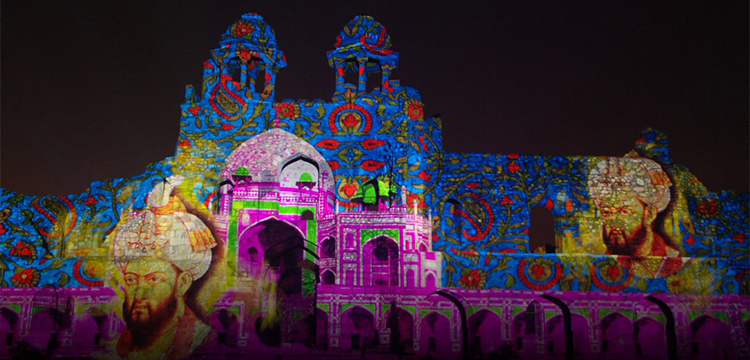One World, One History
Projection Mapping’s universal story

What monuments will they build, if they build any at all, when – when the world gets back to “normal”? And more to the point, will any future generations understand what those monuments mean?
That’s the problem with history: live through it, and you know a monument’s meaning, come to it later, and it’s just another historical building ticked off in another tourist guidebook or on someone’s bucket list.
But now there’s a new projection mapping trend that is already winning many friends and that doesn’t rely on sheer scale and spectacle – but certainly explains history a whole lot better.
For those of us whose eyes glaze over at the mention of a date before we were born, or can’t tell faleristic from feudalism, that’s a great relief. It means that stories and sites of historical merit can come alive again, in context, in the way their creators intended. It’s already proving its worth at significant sites across the world.
Chinese Water Towns
Before we drove everywhere and roads drew lines on our city plans, canals reigned. And when water overrules wheels, it lends places like Bruges, Venice, and China’s Water Towns, a peaceful charm. Nanxun Old Town in Zhejiang province is one such place – retaining its canals and remaining tranquil and traditional for nearly 1,400 years. But its history, rooted in the silk trade during the Ming Dynasty, has stayed just as obscure.
Now, though, thanks to Christie’s Chinese partner, Wincomn Technology, all that hidden history is alive again. At Baijianlou or the ‘100 Houses Complex,’ projection mapping shows the everyday lives of locals, dragon boat races, and traditional weddings, in context and in sympathy with the ancient architecture. The same is true at Tongjin Bridge – now a cultural heritage site and once the location of a bustling silk fair – where visitors can now, literally, float through history.
The Sun god Surya
It’s also fitting that that projection mapping – light at its most controlled – also tells the story of the Sun Temple at Konark – India’s The Black Pagoda. Dedicated to the Hindu Sun god Surya, this monumental testament to humanity’s fascination with light was built circa 1255 and is now a UNESCO World Heritage site.
Here, as at many sites of cultural importance, it was only the non-intrusive nature of projection mapping that allows the show to happen at all – the Black Pagoda sits in a protected compound and a 120-meter exclusion zone. Try crossing that without projection.
In a remarkable connection across time, and in an exercise probably achievable only in India, Himanshu Sabharwal, Creative Director at Christie partner Tricolor India Schauspiel, actually managed to find direct descendants of the artists who created the original decoration 750 years before – and used them as his content creators.
Given projects like these, it’s increasingly hard to dismiss projection mapping as no more than spectacle and light entertainment. If the content is handled with intelligence and imagination, it can do something extraordinary and never done before. It allows us to make connections with our shared human past in the very places where history was built – reminding us that this is one world, and that we all have a place in it.






